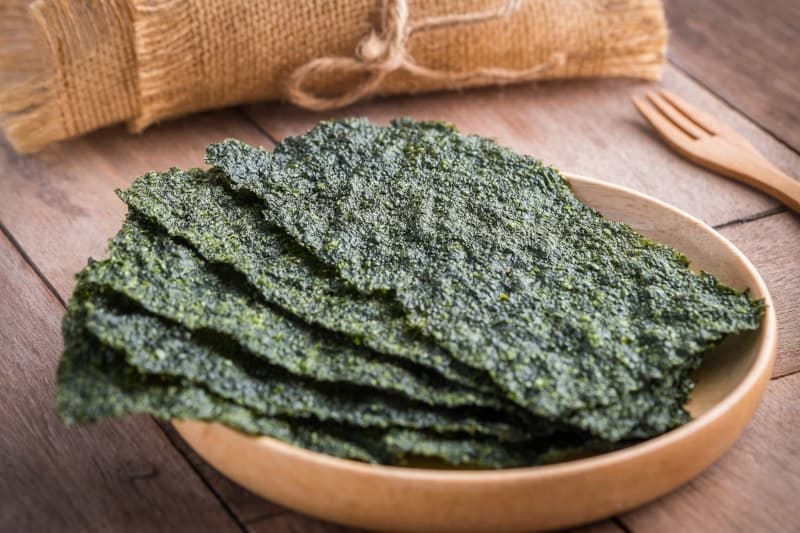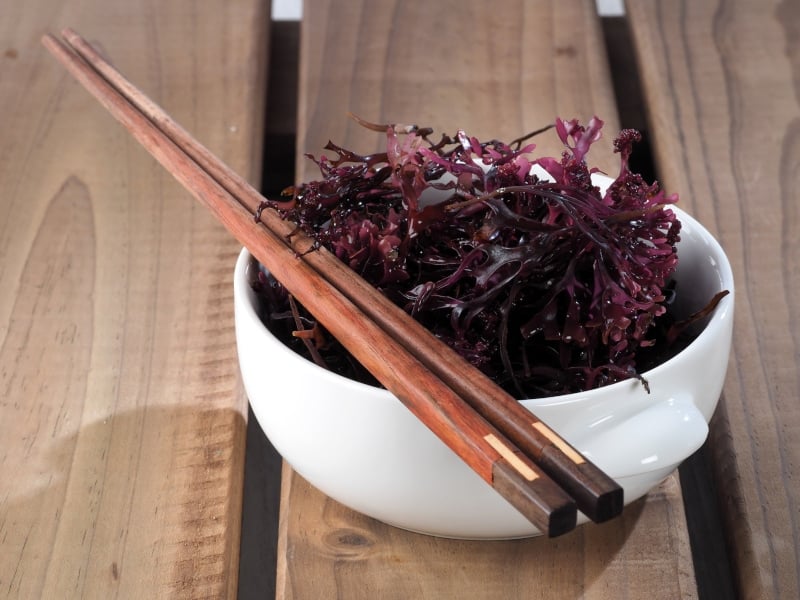Umami, crispness and beautiful servings? Put seaweed on your plate, international scientists suggest
Seaweed exists in oceans all over the world, and there are many possibilities for using it in both the kitchen and in the food industry. However, since we don’t know enough about how to make seaweed taste good, we rarely eat it. Here, three scientists present how seaweed can be used.
Editor’s note: this article, originally published on 27 June 2019, is reproduced on DG Conversations with kind permission from the Danish research and communication center “Taste for Life”.
By Mikael Schneider
Seaweeds exist in many variants and grow in all climatic zones on earth. Most species of seaweed are edible, and humans have by all appearances eaten seaweed for thousands of years. It is even likely that ancient humans developed bigger brains with the nutrient-rich seaweed as a contributing factor.
Still, not many people put seaweed on their list when shopping for dinner. We don’t know how to prepare seaweed to best utilize its taste potential.
Now, three international scientists and seaweed experts try to help consumers through their review paper on seaweed gastronomy. They point to three special characteristics of seaweed as an everyday ingredient: umami, mouthfeel and appearance.
More umami and less salt
One of the experts is Head of Taste for Life, professor Ole G. Mouritsen, who, over a period of years, has researched seaweed’s potential as an ingredient, especially in relation to the basic taste, umami:
“Some seaweed species contain large amounts of free glutamate and seaweed is thus one of the few ingredients which tastes of umami itself. The Japanese Saccharina japonica is beyond doubt the best to give umami, but Dulse, which is also found and sold in Denmark, is good as well. You can use it instead of meat or seasoning in soups and stocks. In the Japanese kitchen, the soup dashi consists of an extract of seaweed and a special fish product,” Ole G. Mouritsen explains.
Because seaweed contains free glutamate it can add umami to food in either fresh, softened or blanched form. Furthermore, if you chop or blend the seaweed you can also use it in dip, pesto and chutney, and thereby add umami.
Dried seaweed crushed into flakes or powder also works as a taste intensifier instead of salt or bouillon:
“The umami taste enhances the experienced taste of salt. Therefore, you can use seaweed as a taste intensifier and actually cut down on the salt. At the same time, seaweed has many different aromas, which can be used as with seasoning,” Ole G. Mouritsen says.
As a side benefit, seaweed contains several important nutrients, like the polyunsaturated fatty acids omega-3 and omage-6, in addition to vitamin B12.

Seaweeds’ texture makes numerous mouthfeels possible
Most seaweed species are tough when just picked. However, the seaweed tenderizes when dried, fried, blanched or boiled. Thus, it might be an advantage in relation to mouthfeel to prepare or grind the seaweed. Often seaweed is sold dried, and in that case, the seaweeds’ enzymes have decomposed and tenderized it.
The texture characteristics of seaweed can be used especially well in drying, frying or deep frying. Green, red and brown species can be very crispy and are ideal for use as snacks or even in desserts, if they are also candied in sugar.
However, when boiling seaweed, the mouthfeel can be unfortunate. This is especially the case with big brown algae, for example sugar kelp. When boiled, the brown seaweeds release huge amounts of slimy polysaccharides, i.e. agar and alginate. You want to avoid this in salads and soups, so they don’t become too slimy or viscous.
Seaweed makes yogurt thicker
The slimy substances are, however, widely used in the food industry. Around 27 million tons of seaweed are produced per year, most of it from sea farming. Half of the produced seaweed is used as ingredients in food while the rest is used to extract thickeners, stabilisers and gelling agents for use in food production and other industries.
“Alginate and agar, plus carrageenan from red algae, are all substances which are extracted from seaweed and used in dairy products, desserts, fruit beverages, dressings and ice cream. The substances are also used in restaurants around the world, where chefs make gels and small liquid filled spheres which resemble fish eggs,” Ole G. Mouritsen explains.
Colours and shapes embellish the food
Some seaweeds, especially red algae, have beautiful colours and shapes. As an accompaniment, they can make dishes look beautiful and more colourful, the scientists propose. By doing this, the food’s aesthetic qualities, rather than the taste, are brought to the fore.
Despite being named red algae, these seaweeds can have many different colours. In addition to this, they grow in different ramified or frayed shapes, which in themselves can appear as very beautiful, edible decorations on the plate.
“It is an advantage to use ramified species of seaweeds, which are stiff enough to avoid collapsing and avoid the seaweed becoming flat when served. You can use variants of differently shaped and coloured red algaes, for instance,” Ole G. Mouritsen says.

From professional chefs’ to consumers’ kitchens
According to the three experts, Spanish consumers have embraced seaweed because professional chefs have demonstrated how seaweed can be used and prepared in many tasty ways.
In Denmark we’re also in the process of using seaweed more:
“Something similar can be seen in the movement New Nordic Food, and a couple of Danish seaweed producers are now established. Seaweed is also popular in relation to the local ingredients-trend because it’s almost always possible to harvest seaweed locally. Also, there’s a belief in seaweed as a healthy supplement to the food,” Ole G. Mouritsen adds.
But if ordinary consumers are meant to use seaweed in their daily cooking, they need access to seaweed, recipes and more knowledge about preparation and taste, the scientists emphasize:
“Cookbooks, food blogs and recipes can help, but we also need to improve the knowledge and craftmanship about seaweed as a food ingredient. We can do this by including seaweed as a subject in natural science and home economics, and as a subject in the chefs’ and bakers’ education. By using all senses and experimenting with seaweed in the kitchen both at home and in school, people can learn to utilise the different seaweed ’taste characteristics’,” Ole G. Mouritsen explains.
Read the original article, published in Botanica Marina, here: